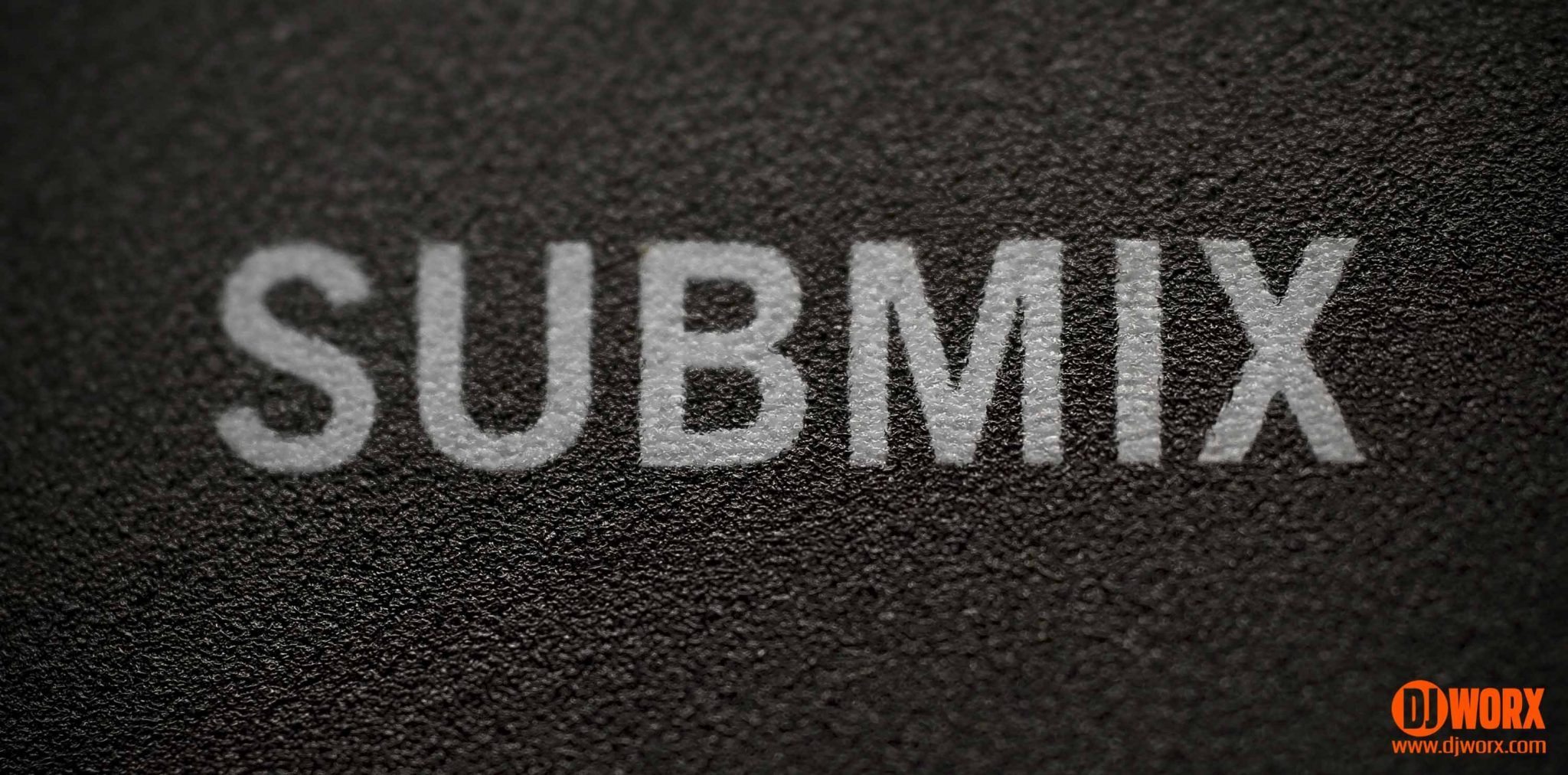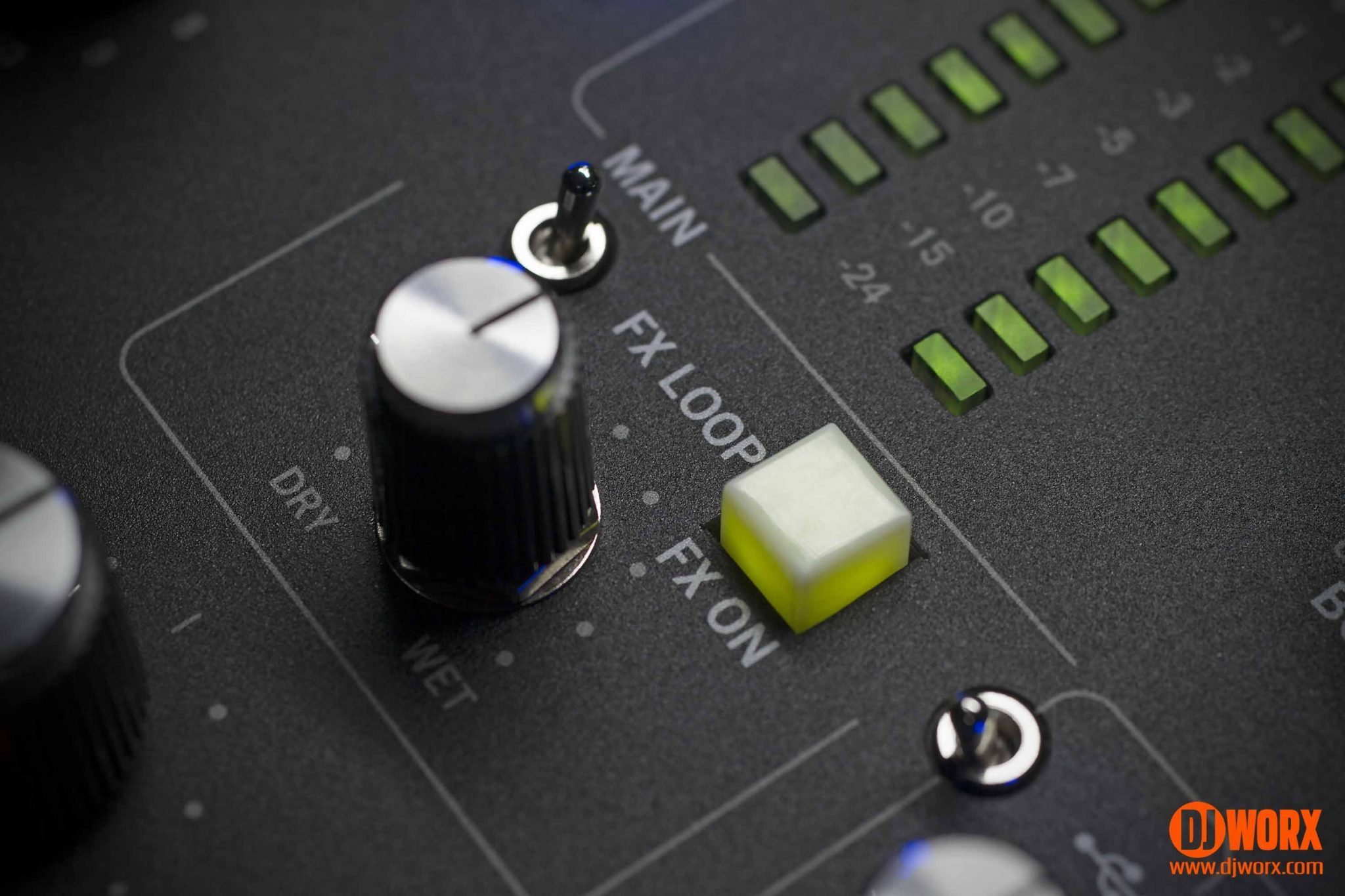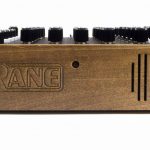LINK: RANE | PRICE: $2899/€3390/£2499 | MANUAL: PDF
INTRODUCTION
While we are treated to an incessant stream of new DJ shiny, the frequency with which we’re genuinely excited has lessened. It’s not that we’re not happy to see new shiny of course, just that it’s becoming a bit like Groundhog Day. Because of established patterns, it’s quite possible to easily predict what the next thing coming from each manufacturer will be. And then Rane throws away the entire rulebook, looks way back in time, and brings out something that even the most hardened of digital advocates can appreciate, if not love.
Just before NAMM, we were treated to an exclusive peek at what Rane was about to serve up to an unsuspecting public. The TTM57 MK2 was perhaps a little bit expected, but the aptly timed and names MP2015 rotary mixer definitely was not. Oh how we salivated upon seeing the first images. And then we read the specs and completely geeked out as any respectable DJ hacks would.
It soon became clear that the MP2015 was a success before anyone had even touched it. DJs of all styles seemed to appreciate the class of this new Rane mixer, even if they didn’t really know what they’d do with one.
The impact of the MP2015 is clear. So now having got one in the Worxlab, and played with it for a little while, it’s time to scribble down my impressions to give you a little more hands-on detail than you have before.
Just so you know, this is the first of two reviews. I’ve got first dibs and will be giving you a walk-through of the basics of using the MP2015 as a pure mixer with some dabbling in the finer points. Then it’s off to Ray’s place in Hamburg for a much deep dissection of the finer tech points as only Ray can.
IN A NUTSHELL
The Rane MP2015 is a four channel rotary mixer. The mixer is entirely digital, and comes with a plethora of pure mix-centric features, as well as a generous serving of all that is good in the digital world. Two USB ports make for easy DJ changeovers and advanced DJ/performer play, as well as having a serious number of inputs and outputs. Free from software frippery, the MP2015 is about as mixery as a mixer can get.
FIRST IMPRESSIONS
It’s a big black wooden trimmed veritable knob-fest of a box, that screams the seventies, Studio 54, vinyl, and the first wave of what would be classed as modern DJing. And despite the retro stylings, this is quite clearly a modern Rane mixer, bar the complete lack of trademark faders and Serato buttons.
Build wise, it feels as sturdy as you would expect a mixer of this class. No “quality enhancement plates” are needed here as the whole chassis is made from thick plate. Just about all the pots are metal and nutted to the faceplate, bar the matrix inputs which are plastic. The likelihood of them snapping off is minimal, but given the otherwise epic build of the MP2015, it’s a small detail that stands out.
Side note: Because of the pot stem, thankfully you can only replace the matrix selector knobs for Chroma Caps or Coolor Caps. I have no idea why anyone would want to change from these beautiful Rane controls.
WORKFLOW
It’s import to understand that despite the relative simplicity (no really) of the MP2015, there’s actually a multi-stage workflow, one that needs some care to use properly. Breaking this down:
CHANNELS
Nominally, the MP2015 is a four channel mixer, with a sub mix that can act as fully fledged channel too, but more on that later. Sticking with the channels from top to bottom:
Input selector: Each channel is switchable between USB A and B, Phono/CD/SPDIF, and aux, and each channel can be routed to the submix.
3 band EQ: Full kill to +6dB with 0-10 input gain (unity at the top to 15dB), and software selectable crossovers.
3 way Filter: High pass, low pass, and high/low hybrid. This is switchable with an illuminated on/off button.
Channel volume: One big rotary with a cue button.
Complementing this is a 16 part LED meter, with a single red overload LED at the top. Given the form factor, I asked about analogue meters, but was informed that there wasn’t the room. And while looking amazingly cool, I suspect that people now prefer the accuracy of LEDs.
About the filter — this is a clever implementation that services the needs of those who like to go full spectrum in one go, or prefer the extra control of just using a low or high. In low/high mode, the zero point has quite a wide band where turning the knob doesn’t do very much. At first I wasn’t too happy with this, but the trade off would have been a centre detent on the low and high modes, something which would have been truly terrible. It’s a good compromise that delivers the goods for everyone.
So having set your gains and EQs, you’re up and running in the classic world of rotary mixing. For most, this would be enough. But there’s more — so much more.
SUBMIX
This is a feature where input channels can be pushed together into another channel for yet another layer of control and adjustment. For example — you’ve got a nice blend going, and you want to do some cool EQing or filtering. If you push them both through the submix, you have another full stage of control. While there is full EQ on the submix, there’s no gain, because by this point you should have the channels keeping out of the red.
The useful addition is a resonance control on the filter. It would have been nice to have resonance per channel, but it’s easy enough to route one channel into the submix to get that additional layer of control.
Essentially, submix gives you an extra set of hands and a huge amount of flexibility over additional inputs. And it’s brilliant. But there’s still more to come.
FX LOOP
It’s clear that the MP2015 has every possible level of control on the channels built in. But what about adding a little external spice? You can do this via the FX loop. This is nothing new for Rane and is a standard feature on all their tabletop mixers.
The control is simple — hook up your external effects unit to the ins and outs and hit the on button. There’s a wet/dry control as well, but I imagine that most of the work will be carried out on the external box itself.
There’s an additional control that let’s you switch between master and submix, so that you apply the effects to everything or just what is going through the submix. So while you don’t get dedicated channel loops (do you ever on a DJ mixer?), you can still be very selective about what has effects applied to it.

SESSION IN AND OUT
Giving you yet more ins and outs is the session feature. This lets you run external devices (USB, SPDIF or line level) into the MP2015 and in turn into the submix . It’s not as fully featured as a regular channel (there are single in and out controls), but the ability to record individual channels through session out via USB is amazing. Normally you’d have the option to record the master mix and have to live with whatever mistakes you made. But being able to multitrack record gives you an unheard of amount of control, something that allows the MP2015 to be much more than just a DJ mixer.
Having established that the MP2015 is way more than just a four channel mixer, and has a ridiculous amount of control, let’s look at the final stage before the audio hits the sound system.
MONITORING
A short but notable mention to the headphone department. On the mixer itself, there are top and front headphone ports for 1/4” and minijacks, with level and plan plus a split cue button (yay!).
You can also adjust the tone via the software control panel. I just wish they’d lined them up. Sorry — my inner designer never sleeps.
ISOLATOR
Now we’re getting into a seriously geeky area, one where audio geeks will argue about the finer points of EQs, filters and crossovers. But generally speaking, an isolator is normally an external device hooked up to the master out that gives you a much finer level of control over the sound, essentially being a master EQ for a more simplistic explanation. They come in all shapes, sizes, and budgets, but generally is the final stage of control before the audio hits the floor.
The isolator offers three bands from kill to 10dB. But sitting between these are crossovers which give you an even greater level of control over the sound. A crossover decides which frequencies get sent to which band, which in turn has a different way of shaping sound through the bands themselves. The basic outcome is that a band control will have more or less effect that it did depending on how you use a crossover can change the way all three bands work. There’s also the nice side effect of just tweaking the crossover on heavily EQ’d audio to deliver a pseudo-filter sound.
Now I know that it’s stated that the isolator output can’t be heard in your headphones and understand why. But it would have been nice. It couldn’t have been too hard to implement, especially as people will use the MP2015 in their own ways to work with sound. Or maybe Rane is just educating people how to do it properly.
MICROPHONE
I do feel sorry for the mic channel. While it is fully specced (line, mic, and phantom power) plus a software switchable clean option (master will or won’t be recorded), it doesn’t get any submix or effects love. You can duck and have a rudimentary tone control, but that’s it. Then again, I suspect that the target market for the MP2015 isn’t likely to shout into a microphone very much if all four channels are going. For everyone else, just run one into a channel.
USB
Twin USBs is Rane’s thing. They appear on a lot of their mixers because they know that their mixers are in a lot of clubs, and the need to switch over is vital. But as Ray’s Sixty-Four review showed, they’re used for a lot more than that.
Having built-in audio interfaces (I still dislike the use of “sound card” in this content) means that software will plug and play with the MP2015. From a DVS perspective, Virtual DJ does (once you install the Rane control panel), but not being certified Traktor Scratch Pro doesn’t, and neither does Serato DJ. You could always try Chad G’s very unofficial hack at your own risk to get Traktor Scratch Pro working though.
I imagine that it could be easily and officially enabled for the big two, but it’s just conjecture at this point that they ever will. And as previously discussed, session out gives you all the multi-channel output you need for software like Ableton Live.
While I’m leaving the really in-depth geek out to Ray, I did want to comment on how insanely mappable the MP2015 is. We could only find two controls that couldn’t be mapped — the mic switch and FX loop send level button. Everything else is mappable, which is nuts.
IN USE
While the MP2015 may appear simple (channels, EQ, filter, no faders – simple right?), it’s important to understand the workflow and use it properly. It’s easy to just plug in, make a few adjustments and mix all night long, but if that’s all you want to do, then the MP2015 isn’t for you. Any old mixer will do.
The MP2015 is all about control. It gives you the levels of adjustability in the channels, which are the foundation for the rest of the mixer. I have to say that it’s a very forgiving mixer — the digital realm affords Rane more control when things get out of hand. So while it’s perfectly possible (if bad practice) to crank everything up and run perma-red, the worst that I could make it do was clip, and that was after turning every visible control up to max. Bass and beats were fatter, but I didn’t get any real crapping out style distortion, as if the MP2015 is saying “I see what you’re doing, and I’m not going to let it happen”.
I don’t know about you lot, but I’m happiest and safest with mixing channels at 0dB, if only because that’s what I’m used to doing, and it always gives me more headroom if things get lively. That said, it would appear that there’s a load of headroom above zero anyway. The difference between the last orange LED and the red one is about 10dB, so it’s going to take a lot to hurt this mixer and your music. And while we could get into a long discussion about the finer points of gain staging, headroom, and other related things, it’s safe to say that the MP2015 will always sound good if you use it right.
About the sound quality. It’s a Rane which should be more than enough to tell you how good it is. At the high end, I only have another Rane, the Sixty-Four to compare with. Sadly, high end mixer manufacturers don’t give units away like sweets, so I don’t have Allen & Heath or E&S mixers casually scattered around the Worxlab. I believe however that Ray’s review will address this subject in much greater detail. All I can tell you is that through a PA and studio monitors, the MP2015 pushes out crystal clear punchy sound. By hey – it’s all subjective, and there’s more than enough audio control on the mixer to make it sound pretty much how you want.
As a jack of all trades kind of DJ, I very quickly adapted to the lack of faders. In all honestly, it wasn’t even a matter of adaptation — I knew that this would be a matter of purely mixing and so left my scratch hands at home.. But faced with such levels of control is daunting. It’s one thing to eschew faders, but another thing altogether to make sense of multiple levels of EQ, and an isolator too. This is where perhaps people will find different ways to use the MP2015, ones that suit the way they want to work or that make best use of the environment it’s being used in. While there are accepted best practices, it’s entirely up to you how you use the various stages of control.
SUMMING UP
On first view, the universal response to the Rane MP2015 was utter aspirational desire, even from those who have no practical use for a rotary mixer. For it is a thing of beauty, and a reminder of simpler times of the infancy of DJing. But below the aesthetic appeal is a mixer that offers a layer of simplicity that belies a huge amount of power.
One thing to cover off is playing analogue sources through the MP2015. It’s important to remember that and I quote “the MP2015 is designed for playback of High-Resolution Audio (HRA) 24-bit studio master quality sources”. It is a modern mixer for modern times, but uses a classic workflow. That doesn’t mean that analogue sources will suffer a terrible A-D conversion — only premium converters have been used. Without getting into just how much music is produced digitally and then pressed to vinyl, I seriously doubt that in a typical environment where an MP2015 would be used, you’d never be able to tell the difference between analogue and digital anyway.
The MP2015 instills a level of respect, making you treat it properly which in turn gives you great appreciation of what you’re pushing out of the sound system. It teaches you about EQing, gain staging, and general good mixer practice. But as mentioned, the MP2015 is very forgiving and likely to stop you from getting into a distorted mess.
For me, the MP2015 is all about pure mixing and control. Music comes in, and music goes out with no pandering to the needs of turntablists or other more creatively driven DJs. It has a simple function, but the tools it gives you to achieve it are without equal. It isn’t for everyone, and given the price tag and the workflow, you have to really want the MP2015. But I have no doubt that if you do want it and buy it, you’ll be as much in love with it as I am, the difference being that I get a holiday romance, but you can make a life with it.
RATINGS
Quality: If it wasn’t for the plastic input selector pots, it would be perfect.
Features: It doesn’t have faders or cue/loop buttons. But it’s not supposed to. And bar the Isolator in your headphone wish, it does have everything else and more.
Value for Money: It certainly is expensive, but the target market will happily pay for a Rane rotary, and be completely vindicated in doing so.
THE BOTTOM LINE
Stripping away the chaff and frippery of today’s mixers, the Rane MP2015 is an utterly stunning hybrid of old school ways and new school tech, designed for a particular type of DJ. And they will love it, just as I do.
GALLERY
Yes I went a little overboard with the pictures, but you can’t get enough of a good thing right?




























































